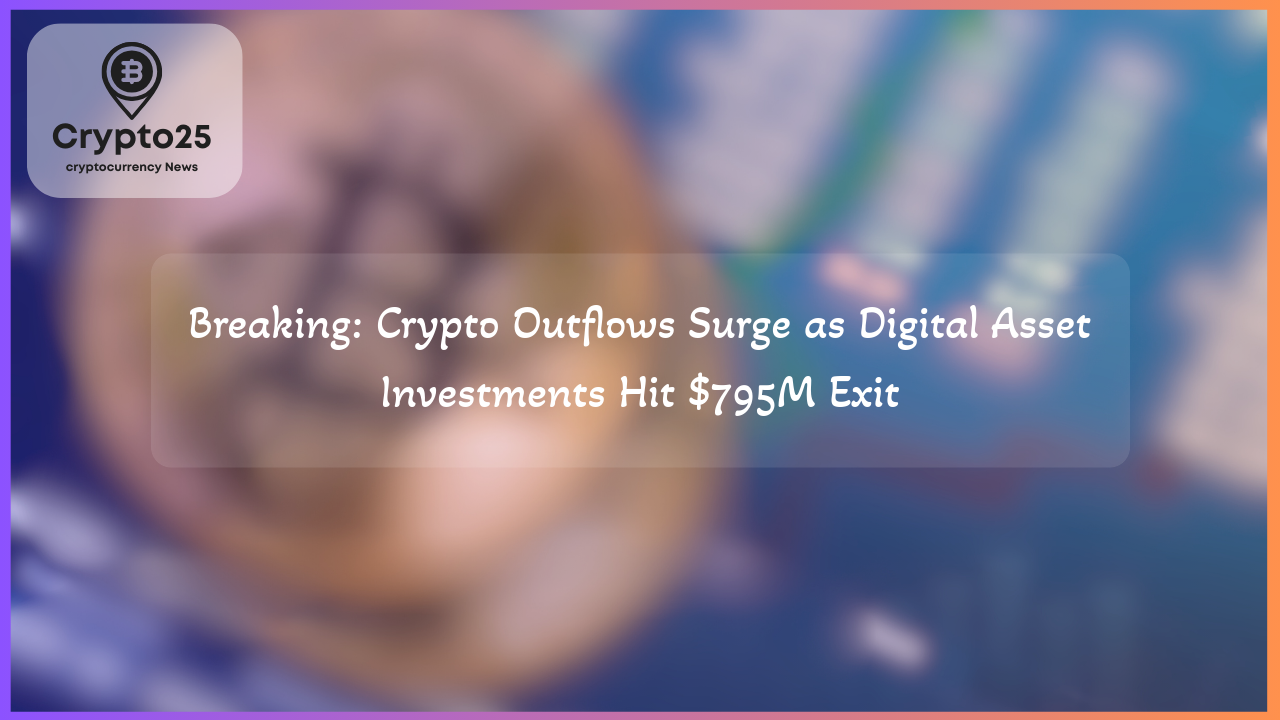
The world of digital asset investment has entered a turbulent phase, with recent developments pointing toward a significant shift in crypto fund flows. Last week, marked by substantial outflows, has drawn considerable attention from analysts and investors alike. As the market reshuffles, Bitcoin and Ethereum remain central to ongoing trends, while regional disparities in fund movement highlight global challenges in the crypto landscape.
Crypto Fund Outflows Surge Amid Market Uncertainty
The cryptocurrency market has witnessed a substantial wave of outflows, with digital asset investment products shedding $795 million last week alone. This brings the year-to-date inflows down to a narrow $165 million, effectively erasing gains made earlier in 2025. According to CoinShares, this marks the third consecutive week of capital moving out of the sector, reflecting growing investor anxiety.
Market analysts attribute this downward spiral largely to geopolitical factors, most notably, global tariff activities influencing asset valuations. These external pressures have amplified existing concerns, leading to capital outflows that started as early as February 2025. Despite these challenges, an end-of-week rally provided some relief by elevating the total assets under management (AuM) by 8% to $130 billion. This rebound hints at underlying resilience, even as market volatility plays a dominant role.
Bitcoin and Ethereum Lead the Sharp Outflows
Bitcoin (BTC) has emerged as the focal point of last week’s downturn, contributing $751 million to the total outflows. Despite this significant setback, Bitcoin’s year-to-date inflows still stand strong at $545 million, offering a glimmer of hope to its investors. However, even short Bitcoin products faltered during this period, recording $4.6 million in outflows.
Ethereum (ETH), the second-largest cryptocurrency by market cap, endured notable outflows of $37.6 million during the same period. Beyond these leading players, several altcoins also felt the heat. Solana (SOL) experienced outflows of $5.1 million, while Aave (AAVE) and Sui (SUI) witnessed smaller movements of $780,000 and $580,000, respectively. These declines suggest an overarching trend of reduced investor confidence across asset classes.
Interestingly, a few altcoins managed to buck the prevailing downtrend. XRP (XRP) led the way with inflows of $3.5 million, while Ondo (ONDO) and Algorand (ALGO) also secured relatively modest gains of $460,000 and $250,000, respectively. This divergence highlights the selective interest of investors, even against a backdrop of widespread contraction in digital asset products.
Global Outflows Reflect Regional Disparities in Crypto Sentiment
The latest data also reveals significant regional disparities in fund flows, underscoring global differences in investor sentiment. The United States accounted for the lion’s share of outflows, contributing $763 million of the $795 million total last week. This dominance by the U.S. emphasizes its outsized role in shaping global crypto market trends, even as regulatory uncertainties persist.
In contrast, other regions exhibited comparatively lower outflows. Switzerland saw $12 million flow out of its crypto funds, while Hong Kong recorded $11 million in outflows. Such regional variations signal differing levels of market engagement and investor confidence across jurisdictions, influenced by both macroeconomic and regulatory factors.
| Title | Details |
|---|---|
| Market Cap | $1.2 Trillion |
| Weekly Outflows | $795 Million |
| Year-to-Date Inflows | $165 Million |
While the crypto industry grapples with waning inflows, last week’s activity underscores both challenges and opportunities in the sector. The uneven effects on Bitcoin, Ethereum, and select altcoins suggest that investor behavior is becoming increasingly nuanced, shaped by global economic pressures and specific asset dynamics. As 2025 progresses, the market may present new opportunities for recovery or further adjustments, making this a critical period for stakeholders across the digital asset ecosystem.
